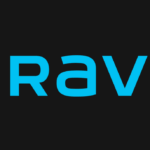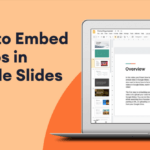Life Insurance Quotes: Safeguarding your loved ones through a financial safety net is a key benefit of life insurance, ensuring their well-being in your absence. With various types of life insurance catering to different budgets and needs, finding the right coverage that aligns with your financial plan is crucial.
The most effective approach to discover life insurance that meets your requirements and stays within your budget is to compare life insurance quotes from multiple companies.
Decoding Life Insurance: An Overview
Life insurance functions as a formal agreement between an individual and a life insurance company, commonly referred to as a policy. Within this arrangement, you commit to making premium payments, typically at regular intervals, to ensure the continuous validity of the policy. In reciprocation, the insurance company pledges to provide a death benefit to your chosen beneficiary in the event of your demise while the policy remains in effect.
The death benefit amount depends on your chosen coverage, ranging from small amounts for specific needs to millions of dollars. You can name multiple beneficiaries, allocate percentages, or choose a charitable organization.
Premiums increase with higher coverage, influenced by factors like age, gender, and health at the time of application. Life insurance quotes are based on your application and remain fixed after purchase, regardless of subsequent health changes.
The Pros of Having Life Insurance
Life insurance offers key advantages, notably providing financial stability for your loved ones in the event of your death. Additionally, these policies can offer financial support during your lifetime, either through the cash value within the policy or living benefits. Living benefits may allow access to funds from your death benefit in cases of serious health issues, such as through an accelerated death benefit for those terminally ill.
The flexibility of life insurance payouts is another advantage, empowering beneficiaries to allocate funds according to their most pressing financial needs. Furthermore, there is a significant tax benefit, as the death benefit is generally not taxable. While there are rare instances of taxable life insurance, beneficiaries typically receive the full death benefit without incurring taxes.
Who Should Consider Life Insurance?
Determining if Life Insurance is Right for You:
- If your family depends on your income.
- If you have a long-term financial dependent, like a special needs child.
- If you wish to cover your burial expenses.
- If you want to leave an inheritance to your children without the burden of accumulating a substantial sum for passing on.
Categories of Life Insurance Policies
There exist two main categories of life insurance policies: term life insurance and permanent life insurance. Within the realm of permanent life insurance, there are diverse options available. Consequently, it is crucial to comprehend the unique features and benefits associated with each type before arriving at a decision.
Exploring the Basics: Understanding Term Life Insurance
Term life insurance provides the opportunity to secure a fixed rate for a specified term duration, usually ranging from 5 to 30 years. Throughout this period, your premiums remain constant, ensuring predictability. The insurance company disburses a death benefit exclusively if you pass away while the coverage is active. Opting for a longer term results in higher life insurance quotes.
Comparatively, term life insurance quotes are significantly lower than those for permanent life insurance. This makes term life insurance an economical choice, especially during crucial years when your family relies on your financial support. It offers an affordable means to maintain coverage during periods of heightened dependency.
Understanding the Dynamics of Permanent Life Insurance
Permanent life insurance guarantees lifelong coverage with the flexibility to build cash value, resulting in higher quotes compared to term life. Whole life insurance ensures fixed premiums and a guaranteed rate of return, making it relatively expensive but stable. Guaranteed issue life insurance targets older individuals, offering coverage without a medical exam for final expenses, albeit at a higher cost for limited coverage.
Universal life insurance provides lifelong coverage with adjustable premiums and death benefits, allowing flexibility within specified limits. Guaranteed universal life insurance, while low on cash value, maintains constant premiums and death benefits until a chosen expiration age. Indexed universal life ties cash value to market indices, offering variable returns but may involve complexity and high fees. Variable universal life combines flexibility with investment choices, with returns and death benefits dependent on chosen investments and market performance.
Unveiling the Price of Protection: Exploring Life Insurance Quotes
Obtaining life insurance quotes comes at no cost, allowing you the freedom to collect quotes from various companies when in the process of shopping for life insurance quotes.
Illustrative life insurance quotes for a 20-year term with coverage amounting to $500,000.
American General——–
- Policy Name: Select-a-Term
- Annual Cost (Female, Age 30): $190
- Annual Cost (Male, Age 30): $225
- Annual Cost (Female, Age 40): $285
- Annual Cost (Male, Age 40): $340
- Ameritas————
- Policy Name: Value Plus Term
- Annual Cost (Female, Age 30): $215
- Annual Cost (Male, Age 30): $250
- Annual Cost (Female, Age 40): $340
- Annual Cost (Male, Age 40): $400
- Banner/Legal & General America———
- Policy Name: OPTerm
- Annual Cost (Female, Age 30): $188
- Annual Cost (Male, Age 30): $223
- Annual Cost (Female, Age 40): $283
- Annual Cost (Male, Age 40): $350
- Haven Life———
- Policy Name: Haven Term
- Annual Cost (Female, Age 30): $174
- Annual Cost (Male, Age 30): $219
- Annual Cost (Female, Age 40): $277
- Annual Cost (Male, Age 40): $327
- Lincoln Financial———
- Policy Name: TermAccel Level Term
- Annual Cost (Female, Age 30): $190
- Annual Cost (Male, Age 30): $285
- Annual Cost (Female, Age 40): $305
- Annual Cost (Male, Age 40): $364
- Midland National———
- Policy Name: Premier Term
- Annual Cost (Female, Age 30): $205
- Annual Cost (Male, Age 30): $240
- Annual Cost (Female, Age 40): $300
- Annual Cost (Male, Age 40): $350
- Minnesota Life——–
- Policy Name: Advantage Elite Select Life
- Annual Cost (Female, Age 30): $210
- Annual Cost (Male, Age 30): $255
- Annual Cost (Female, Age 40): $314
- Annual Cost (Male, Age 40): $365
- Mutual of Omaha———–
- Policy Name: Term Life Answers
- Annual Cost (Female, Age 30): $238
- Annual Cost (Male, Age 30): $278
- Annual Cost (Female, Age 40): $338
- Annual Cost (Male, Age 40): $398
- Nationwide———
- Policy Name: YourLife GLT
- Annual Cost (Female, Age 30): $225
- Annual Cost (Male, Age 30): $260
- Annual Cost (Female, Age 40): $310
- Annual Cost (Male, Age 40): $365
- Pacific Life——-
- Policy Name: PL Promise Term
- Annual Cost (Female, Age 30): $189
- Annual Cost (Male, Age 30): $224
- Annual Cost (Female, Age 40): $284
- Annual Cost (Male, Age 40): $335
- Penn Mutual ———-
- Policy Name: Convertible Term
- Annual Cost (Female, Age 30): $209
- Annual Cost (Male, Age 30): $248
- Annual Cost (Female, Age 40): $309
- Annual Cost (Male, Age 40): $363
- Principal———-
- Policy Name: Term with Conversion Extension
- Annual Cost (Female, Age 30): $206
- Annual Cost (Male, Age 30): $245
- Annual Cost (Female, Age 40): $307
- Annual Cost (Male, Age 40): $363
- Protective——–
- Policy Name: Classic Choice
- Annual Cost (Female, Age 30): $188
- Annual Cost (Male, Age 30): $223
- Annual Cost (Female, Age 40): $283
- Annual Cost (Male, Age 40): $335
- SBLI———–
- Policy Name: SBLI Term Life
- Annual Cost (Female, Age 30): $205
- Annual Cost (Male, Age 30): $239
- Annual Cost (Female, Age 40): $296
- Annual Cost (Male, Age 40): $376
Obtaining Your Life Insurance Quotes
Step 1 : Determining Your Life Insurance Needs
Unlocking the right amount of life insurance quotes hinges on grasping both your financial commitments and available resources. It’s essential to secure sufficient coverage to fill the financial gaps that your existing resources might not meet.
Consider various financial responsibilities:
Funeral and Burial Expenses:
- The National Funeral Directors Association reports a median cost of $7,848 for a funeral with visitation and burial.
Income Replacement:
- Evaluate the portion of your yearly salary necessary for replacement, factoring in the duration, such as until your children complete college.
Debts:
- Assess the cost of ongoing mortgage payments or paying off the entire mortgage. Include any other substantial debts requiring settlement.
Child Care:
- Contemplate potential expenses if your spouse or partner needs assistance with childcare in your absence.
College Tuition:
- Determine your desired contribution to your children’s college education, multiplying it by the number of children.
Once you tally your financial obligations, subtract available resources:
Emergency Savings:
- Leverage cash reserves to cover immediate bills or short-term expenses.
College Savings:
- Capitalize on savings in a 529 college savings account or other accounts to reduce the required life insurance for your children’s education.
Retirement Savings:
- Consider funds from a 401(k), IRA, or other retirement accounts to assist loved ones with expenses or serve as a source of retirement income.
Existing Life Insurance:
- Factor in any current life insurance policies as additional resources. However, be mindful that workplace coverage may cease if you change jobs.
Prepaid Funeral Costs:
- If you’ve prearranged your funeral, subtract this cost from your life insurance needs.
Step 2 : Assessing Life Insurance Companies and Policies
Selecting a life insurance quotes policy is a significant, long-term commitment. It’s crucial to identify an insurer with a stellar reputation and offerings that align with your requirements at a reasonable cost.
Here’s a guide to help you in your selection process:
Assess Financial Strength:
- Examine the insurer’s financial strength through ratings agencies like AM Best. A high financial strength rating signifies the insurer’s capacity to fulfill claims over an extended period.
Term Life Insurance Considerations:
- If opting for term life insurance, explore the insurer’s options for policy renewal post the level term period or the potential to convert the policy to a permanent life policy.
Evaluation for Permanent Life Insurance:
- For permanent life insurance like universal life, scrutinize the policy’s internal fees and the speed at which it accumulates cash value. These details are often presented in the life insurance policy illustration.
Step 3 : Collecting Information for Your Application
To obtain life insurance quotes, you’ll be required to furnish essential information. This may encompass:
General Health Details:
- Information regarding your weight and height, providing an overview of your overall health status.
Medical History:
- A comprehensive account of your medical history, encompassing current and previous health conditions to help insurers assess your health profile.
Family Medical History:
- Insight into your family’s medical history, including any instances of heart disease among parents and siblings, offering a broader context for risk evaluation.
Medication Record:
- A detailed list of current medications you’re taking or have taken in the past, aiding insurers in understanding your medical background and potential health risks.
Step 4 : The Process of Comparing Life Insurance Quotes
Discovering a competitive price for your life insurance quotes policy involves comparing quotes from various insurers. You can acquire free quotes through:
Online Platforms:
- Easily obtain online quotes for certain policy types like term life insurance and guaranteed issue life insurance. For more complex policies like whole life, interacting with an agent may be necessary.
Phone or In-Person Interactions:
- Connect with a local life insurance agent via phone or in-person to facilitate the quote process for any life insurance type. Opt for an independent agent who represents multiple insurers rather than a “captive” agent tied to a single company.
Financial Advisors:
- Seek assistance from financial advisors who not only provide life insurance quotes but also help craft a comprehensive financial plan. This ensures a holistic approach to your insurance needs and overall financial well-being.
By exploring these avenues, you’ll be equipped to compare quotes and make informed decisions about the life insurance policy that best aligns with your needs and budget.
Key Factors in Life Insurance Quotes Determination
Several key factors play a pivotal role in determining life insurance quotes, with age, gender, and health standing out as primary influencers. Women often enjoy lower premiums due to their longer life expectancy, while younger and healthier individuals tend to secure the most favorable life insurance quotes, ensuring a cost-effective rate throughout their policy’s duration.
When assessing life insurance quotes, the following factors are typically taken into account:
Medical History:
- Current and past health conditions are thoroughly examined to gauge overall health.
Prescriptions:
- Information about current and past prescriptions helps insurers assess medical needs.
Family Medical History:
- Insight into your family’s medical history, encompassing parents and siblings, provides a broader health context.
Driving History:
- Your driving record, especially any history of DUI convictions, reckless driving, or speeding tickets, is considered.
Lifestyle Habits:
- Habits like smoking, drinking, and drug use are influential factors in determining life insurance quotes.
Risky Activities:
- Participation in hazardous hobbies, such as skydiving, may impact your life insurance premium.
Occupational Hazards:
- Occupations involving dangerous duties are evaluated for their impact on risk.
Financial History:
- Recent bankruptcy can be a factor affecting life insurance quotes.
Legal Record:
- Any criminal record may also be considered in the assessment of life insurance premiums.
5 Essential Insights Before Seeking Life Insurance Quotes
Affordable Protection: Life Insurance Costs Unveiled – A Comprehensive Analysis
- Discover the surprising affordability of life insurance. Forbes Advisor’s analysis reveals that a 20-year term life policy with a $500,000 death benefit for a healthy 30-year-old woman averages just $205 annually or $17 per month. For males, the average quote is $252 per year or $21 per month.
Age Matters: Unlocking Life Insurance Savings – The Impact of Age on Quotes
- Uncover the correlation between age, health, and life insurance quotes. Buying life insurance at a younger age translates to lower premiums. Waiting results in higher quotes due to aging, and potential health issues can further elevate costs.
Skip the Medical Exam: Exploring No-Exam Life Insurance Options
- Learn about no-exam life insurance alternatives. Multiple insurers offer coverage up to 30 years and over $1 million without a medical exam, providing convenient options for those seeking coverage without the need for a medical evaluation.
Swift Approval: Streamlining the Life Insurance Application Process
- Explore the ease and speed of the life insurance application process. If you’re in good health and generally under 60, online applications for no-exam coverage can lead to fast approvals within minutes. Some no-exam policies offer competitive pricing compared to those requiring an exam.
Smart Savings Strategy: Comparing Life Insurance Quotes for Maximum Value
- Understand the potential savings through quote comparisons. Prices for life insurance can vary significantly, potentially saving you thousands over the policy’s life. Engage with an independent insurance agent for a thorough quote comparison from various companies, leveraging their expertise for the best quotes based on your age and health.
A Step-by-Step Guide on How to Apply for Life Insurance
Once you’ve collected your quotes and selected an insurer that aligns with your financial plan and requirements, it’s now time to initiate the application for a life insurance policy. The application procedure will differ based on the underwriting approach employed.
Full underwriting: Employing the conventional underwriting approach involves completing an extensive questionnaire, undergoing a life insurance medical examination, and granting the insurer permission to collect information from various external sources. While this process may extend over a couple of months, it is likely to yield the most competitive life insurance quote, particularly for those in good health, as it provides the insurer with ample information to accurately price the policy.
Accelerated underwriting: Similar to traditional underwriting, this process skips the medical exam and expedites the assessment by leveraging data to evaluate applicant risk. By gathering data from third-party sources during the application, approval for coverage can be obtained swiftly.
Simplified issue: Acquiring simplified issue life insurance involves a rapid and straightforward process. Responding to only a few health questions initiates the process, with insurers utilizing third-party sources to gather additional information. This approach eliminates the need for a medical exam, enabling insurers to make immediate decisions on applicant acceptance or rejection. It’s worth noting that rates for simplified issue policies tend to be higher due to the limited information available to insurers about applicants.
If you are scheduled to undergo a life insurance medical examination, it’s crucial to approach the examination with seriousness and diligence. The results of the medical exam play a significant role in determining the life insurance quote you will be presented with.
Preparing for the exam:
In the weeks leading up to the examination, consider the following guidelines to optimize your health profile:
Dietary Choices:
- Limit salt intake and prioritize a nutritious diet rich in whole grains, fruits, vegetables, and low-fat dairy products.
- Moderating alcohol intake is advisable during this period.
The day before the exam:
Lifestyle Adjustments:
- Refrain from consuming alcohol, nicotine, and red meat.
- Avoid over-the-counter medications like antihistamines and decongestants.
- Ensure a good night’s sleep to positively impact blood pressure.
The day of the exam:
Pre-Exam Preparations:
- Steer clear of caffeine consumption.
- Refrain from engaging in strenuous exercise.
- Stay well-hydrated by drinking ample water.
- Ensure you have all necessary documentation, including a photo ID and relevant medical information, ready for the examination.
FAQs on Life Insurance Quotes
How can I optimize my approach to ensure I receive life insurance quotes that align with my budget?
Optimal strategies for acquiring cost-effective life insurance involve obtaining quotes at a young and healthy stage. Since age and health significantly impact insurance quotes, initiating the process early ensures more favorable rates. Waiting to secure life insurance leads to increased costs each year, making it imperative to act promptly to obtain affordable coverage.
What age is considered ideal for starting the process of acquiring life insurance coverage?
Purchase life insurance as soon as the need arises, allowing you to secure favorable rates based on your age and health. Common life events, such as marriage, home purchase, and having children, often prompt individuals to consider acquiring life insurance coverage. The timing of your purchase aligns with specific life milestones and the corresponding increase in responsibilities, emphasizing the importance of addressing your life insurance needs at the earliest suitable moment.
How does the taxability of life insurance vary based on the type of policy?
Life insurance proceeds, usually designated for beneficiaries, are generally not deemed taxable income. Yet, specific situations exist where life insurance may incur taxation. For instance, withdrawing funds from a permanent life insurance policy or surrendering the policy for cash could result in taxable income, particularly on investment gains. Conversely, borrowing from the cash value is typically non-taxable, provided the insurance policy remains active. Understanding these nuances is crucial to navigating the potential tax implications associated with life insurance.
What are the essential steps to initiate and file a life insurance claim?
To initiate a life insurance claim, reach out to either the policy’s insurance agent or directly contact the life insurance company. Essential documentation, including a copy of the death certificate obtainable from a funeral director, is typically required. The insurer will thoroughly review the submitted claim, and in most cases, claims are processed and paid within a timeframe of approximately 30 days. This streamlined process ensures a prompt and efficient resolution for beneficiaries during what can be a challenging time.
What factors should I consider when evaluating the value of life insurance for me?
Life insurance is worth it if your passing would cause financial hardship to your family. Affordable options like term life insurance can make coverage budget-friendly.










